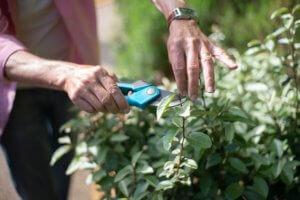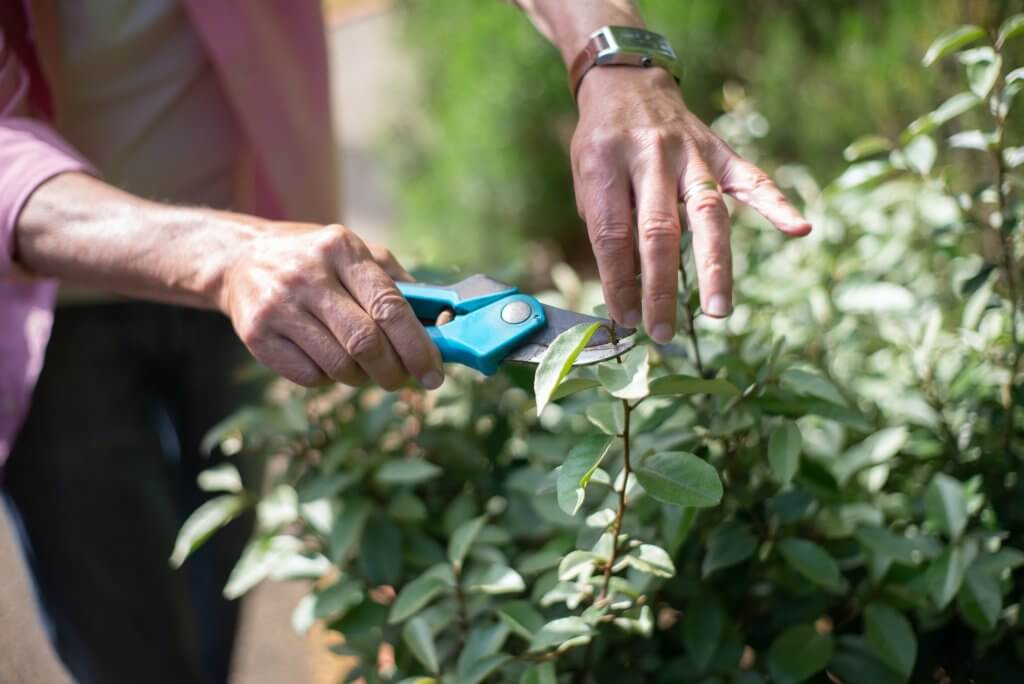Pruning your roses correctly can keep them flourishing in the garden. Learn the correct pruning techniques for your rose plants.

To grow in your backyard garden and produce lovely, fragrant blooms, roses require regular trimming! Pruning encourages new growth, keeps the bush’s structure, and permits proper airflow around the plant, which is vital to fend off fungi and other diseases. While all roses can be pruned using the same general methods, depending on when they bloom, different varieties need to be pruned at different periods.
Learn the proper way to prune your roses. Get detailed advice on how and when to prune your rose bushes.
Equipment Required
To start, gather the tools you’ll need to trim your rose bushes.
- Pruning scissors
- Rubbing alcohol
- Thick gloves for gardening
- Security glasses
- Nail polish, carpenter’s adhesive, or pruning sealant (optional)
Rose pruning season
For optimum development and general plant health, it is crucial to prune your roses at the right time of year. The sort of roses you are growing in your garden will determine when to prune them.
Vintage Wood Roses – On aged wood, this rose only blooms once a season. Old wood roses require minor shaping to tidy up the plant, but they don’t require rigorous pruning like reblooming roses. When the plant has finished blooming at the end of the summer, remove any old canes, dead branches, and dead leaves. Discard any branches that seem broken, dead, or infected in the early spring.
Climbing Roses – Roses that climb as they grow are known as climbing roses. In order to keep their shape and control their tendency to climb, they also require annual pruning in the late summer following their bloom. You can tidy up the plant once again in the early spring by removing any dead or diseased branches, much like with old wood roses.
New Wood Roses / Rebloom — Reblooming roses, also known as new wood roses, are bushes that bloom multiple times throughout the growing season and need to be pruned in the early spring. Usually, you should prune them at the end of March or the beginning of April, or as soon as you see fresh buds appearing on your plant. Take out any old wood and canes that are entangled or crossed. Also throughout the season, new wood roses need to be regularly deadheaded in order to continue producing new flowers for months. After each flowering cycle, deadhead roses by removing the wasted blossoms.
Rose Pruning Technique
Now that you are aware of the appropriate time to prune each species of rose, take your shears and get ready to begin pruning! Make it easy by carefully following the directions on how to trim your roses. To prevent coming into contact with any thorns, put on protective eyewear and heavy gloves.
1. Clean and Sharpen Your Pruning Shears
Clean your pruning shears before you start. Clean your shears with rubbing alcohol to sanitize them. By disinfecting your equipment, you can ensure that no infections spread from one plant to another. Sterilize after each cut if you’re removing a cane or numerous canes that have a disease. Sharpen the blades of your pruning shears if necessary so that they are also easy to cut with.
2. Identify Canes and Branches that Are Dead, Look Weak, or Have Diseases
Look for any canes or branches that appear weak, dead, or that might be infected before you begin pruning. These canes will be black or brown in color and seem dried out and withered. Spindly canes are typically thinner than a pencil and will appear fragile and feeble. The main stems of your rose bush are called canes, whereas the side shoots are called branches.
3. Make a Right-Angle Cut
Cutting each cane at the proper angle is crucial once you’ve decided which ones to get rid of. The new growth is encouraged to grow outward rather than inward toward the bush by cutting at the proper angle. The airflow surrounding the plant is reduced and canes are more likely to tangle as they grow closer together. Trim back to the healthy tissue where your canes are at a 45-degree angle and about 14 inch above an outward-facing bud. Cut at an angle, not toward the bud, but rather away from it.
Roses can have their natural sap spill off the opposite side when cut at this angle. This natural fluid is produced by canes to seal the cut after pruning. Apply a pruning sealer, carpenter’s glue, or nail polish to the cut to quickly seal it. By using this technique, the cane is further shielded against cane borers, which are insects that lay their eggs in the cut stem of the cane.
4. Get Rid of Any Bugs
Finally, trim any suckers that are clearly visible on your rose bushes. Suckers are offshoots that emerge from the roses’ roots and swiftly encroach onto your landscape, stressing out your plant. Usually, they appear next to the plant, sometimes even a few feet away. They are linked at the roots, though. Dig deeper into the ground toward the primary root and cut your sucker off there rather than removing the top growth. If you merely make a shallow cut at the soil level, several suckers will probably sprout back in its place.
Start pruning your roses.
To properly care for your bushes, you must prune your roses. According to the variety, prune your roses at the appropriate time of year, always make a 45-degree cut, and don’t forget to get rid of those annoying suckers.

